Root Awakening: Red Tree Shrub is a species native to Singapore
Sign up now: Get ST's newsletters delivered to your inbox
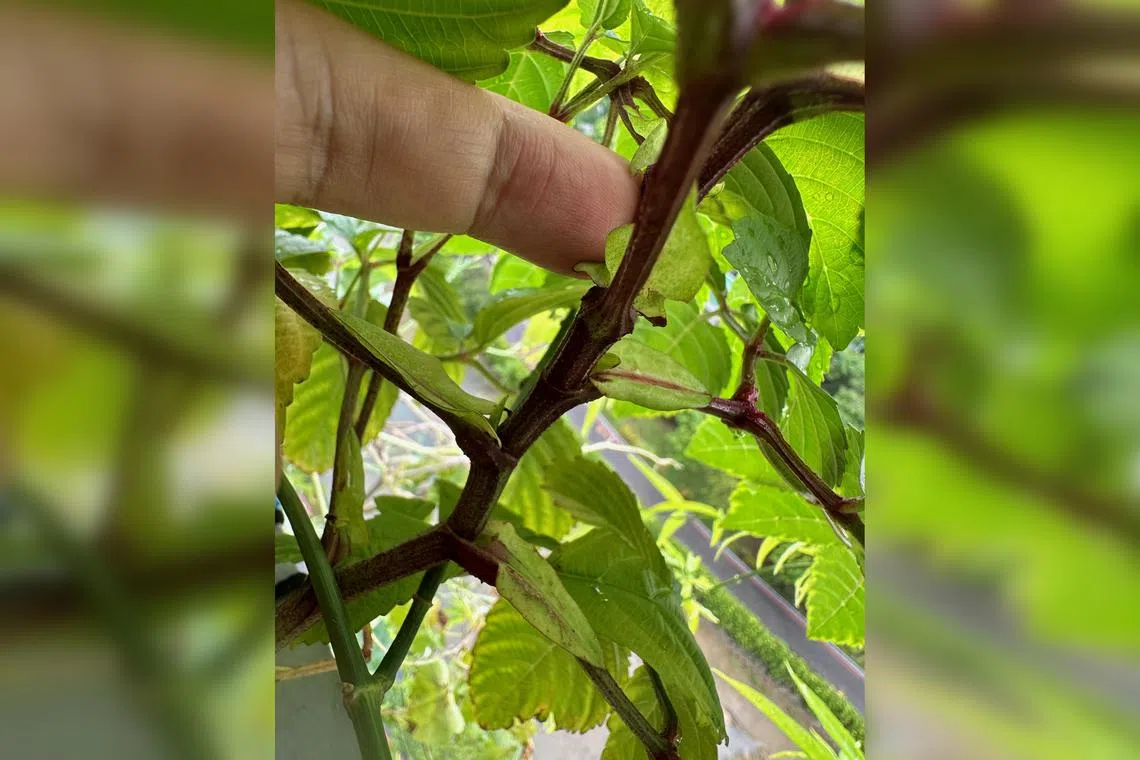
The Red Tree Shrub produces flowers that attract pollinators and its fruit is eaten by birds.
PHOTO: WONG BOON HONG
Wilson Wong
Follow topic:
Red Tree Shrub can be grown in an ecological garden
What plant is this? There is a “leaf” growing right from the main trunk with every branch. Should I keep it?
Wong Boon Hong
The plant is likely the Red Tree Shrub (botanical name: Leea rubra), which is a species native to Singapore and the region. It produces flowers that attract pollinators and its fruit is eaten by birds. As such, it is widely planted in ecological gardens.
The leaf-like structure is called a stipule. It protects developing new growth at the growing tip of the plant.
You can keep the plant if you have the space and growing conditions it requires. In a high-rise setting, the plant should get at least six hours of direct sunlight and be grown in moisture-retentive and well-draining media. A large pot may be needed as the plant grows larger.
Money Plant could be infested by pests
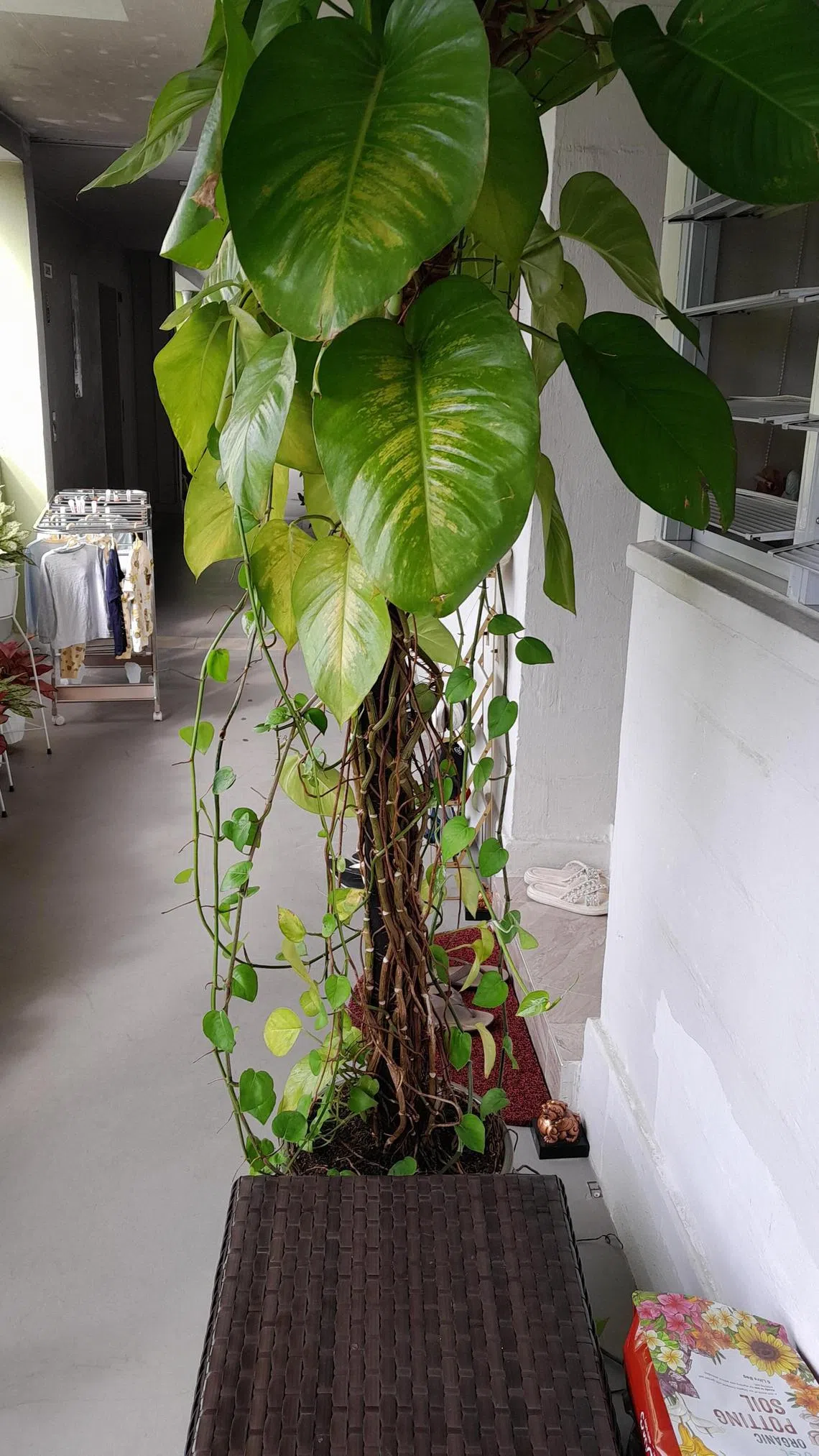
The bleaching of the leaves on the Money Plant may be due to sudden intense sunlight or a spider mite infestation.
PHOTO: KE YI YONG
My plant, which I bought three months ago, now looks like this. What happened?
Ke Yi Yong
Does your Money Plant get direct sunlight? The plant may have been produced and grown under shadier conditions in the nursery, so the exposure to intense sunlight could have cause some bleaching and burning of the leaves facing the direction of sunlight. The plant will adapt to higher light levels eventually.
The plant may also be infested with sap-sucking pests such as spider mites, which is a common occurrence in high-rise gardens.
Check the undersides of leaves for small red dots – they indicate the pests’ presence. They can be difficult to manage, even with pesticides. You can try spraying the plant thoroughly with abamectin. Repeated applications may be required to provide adequate control.
As for the trailing stems with small leaves, they are a result of stems that are not growing on a support. The Money Plant produces aerial roots on its stems that naturally adhere to a surface to grow on.
Give Monstera a moss pole to climb on
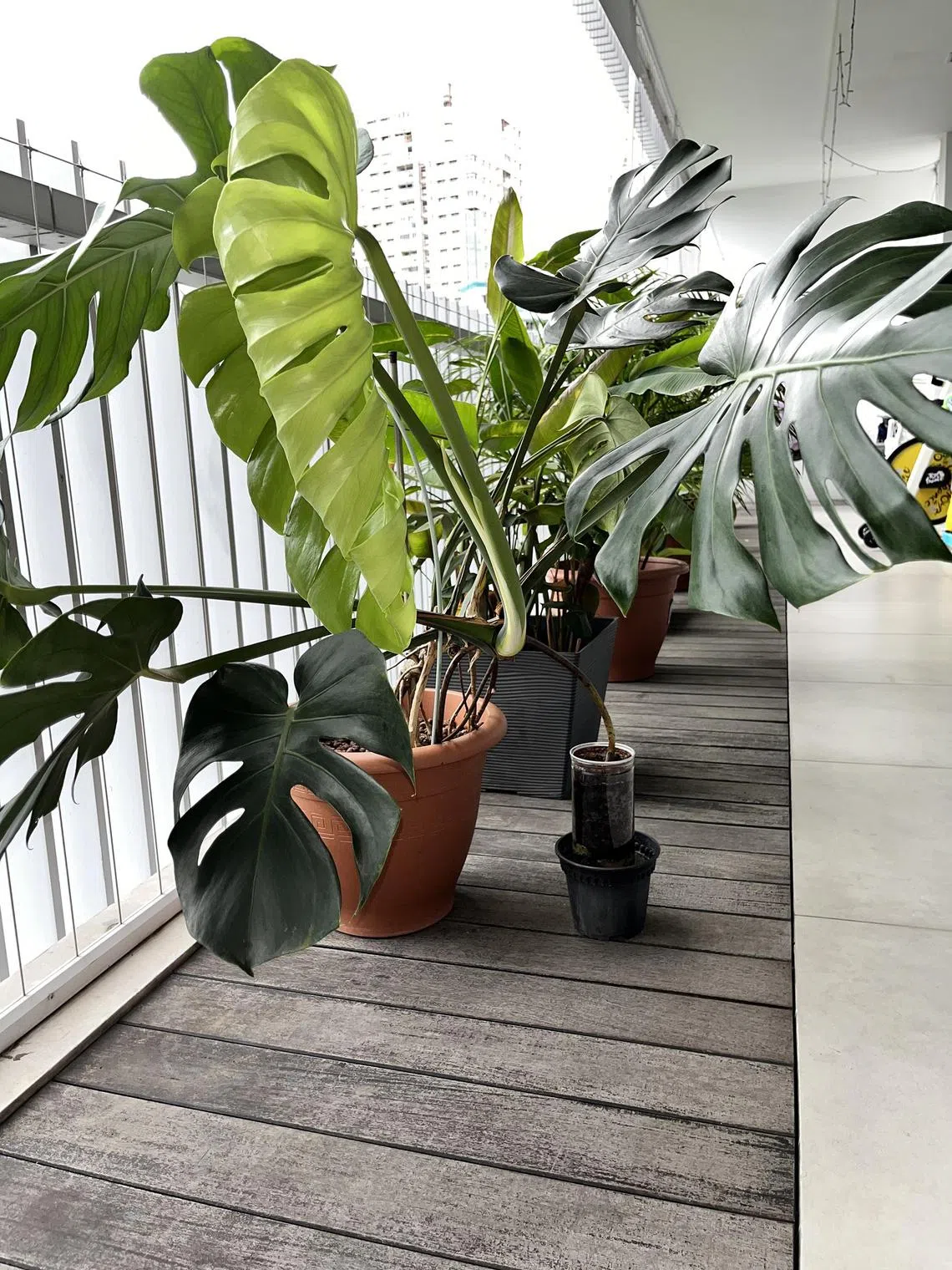
Guide the climbing Monstera plant with a moss pole.
PHOTO: KUNAL BHATIA
My Monstera is healthy and growing well. But the roots of the new leaves are growing away from the pot and it is becoming very difficult to guide them back to the container. What should I do?
Kunal Bhatia
The Monstera plant grows naturally as a climber. It produces aerial roots that attach onto a moist surface as the vine extends. You can buy a long moss pole from local nurseries and tie the plant to it. This will guide it to climb. When the stem is attached to such a surface, its leaves will grow bigger.
Plant is a fig tree species
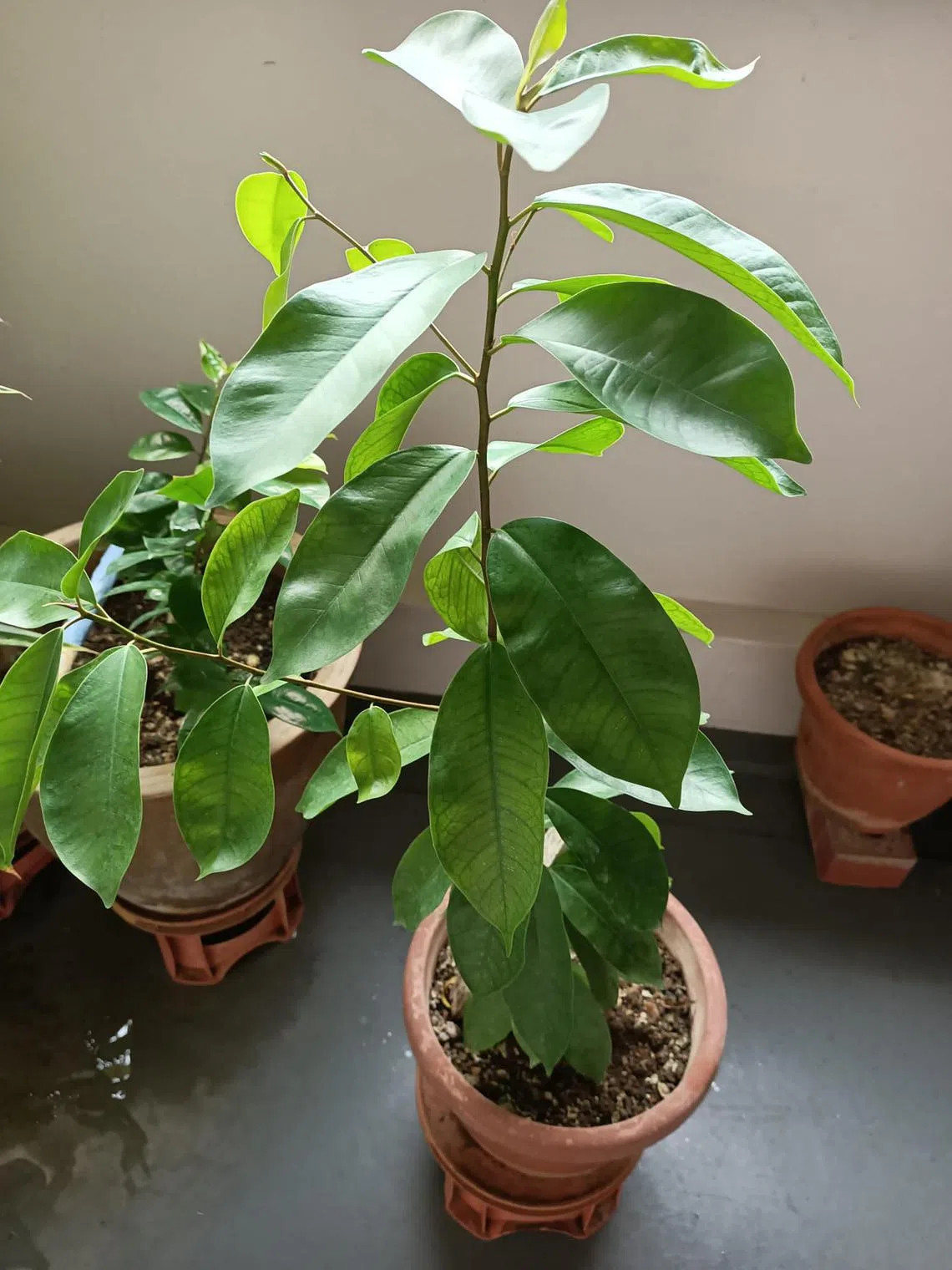
The Malayan Banyan thrives in an outdoor garden.
PHOTO: FRANSISKA TEO
This plant has been growing in my pot for six months. What plant is it and how do I take care of it?
Fransiska Teo
The plant is a species of the strangler fig (botanical name: Ficus microcarpa), commonly called the Malayan Banyan. Its seed was probably taken to the pot by a bird that had eaten its fruit.
This species grows into an enormous tree with time, although planting it in a pot will restrain its growth. It grows best outdoors with sufficient space and in a spot with well-draining soil and exposure to full sun.
Protect rose plant from thrips and rain
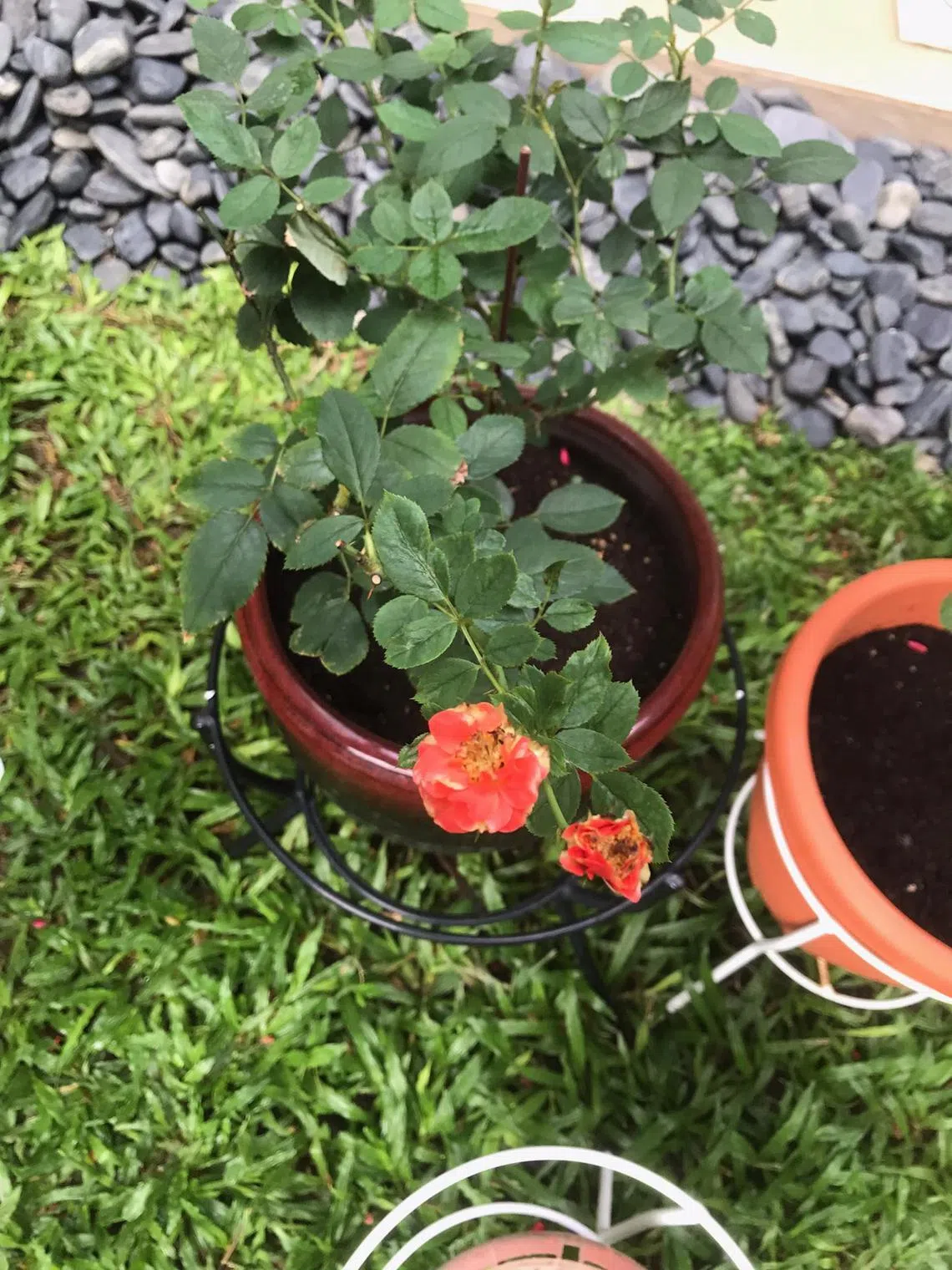
Thrips can damage developing flower buds of the rose plant.
PHOTO: RAYMOND OOI
My roses recently did not bloom fully. What went wrong and what is the recommended remedy?
Raymond Ooi
From the streaked appearance in the petals as well as crinkled leaves, it appears that your plant may have thrips. These pests are very small and they damage developing flower buds.
Note that they are very difficult to control and require regular applications of pesticides such as spinosad or filpronil. You will need to rotate such pesticides with others to reduce the chance of pesticide resistance.
Also, you may find it beneficial to protect your rose plant by growing it under a rain shelter with a clear roof. This will allow sunlight to come through and shield your plant from the impact of heavy rain.
Rain that falls on the blooms can damage them. This intervention will also help to reduce the likelihood and severity of fungal diseases in your plant.
Answers by Dr Wilson Wong, an NParks-certified practising horticulturist and parks manager. He is the founder of Green Culture Singapore and an adjunct assistant professor (Food Science & Technology) at the National University of Singapore.
Have a gardening query? E-mail it with clear, high-resolution pictures of at least 1MB, if any, and your full name to . We reserve the right to edit and reject questions.

